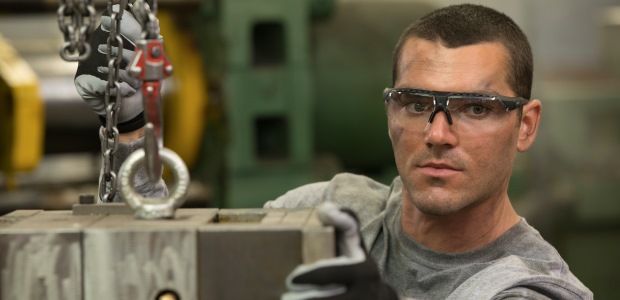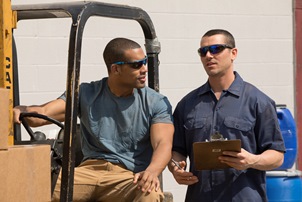
Changing the Focus of Eye Safety in 2018
When we take a holistic view of eye safety by considering the manufacturer, the products and the individual workers who rely on them, we can make great strides toward reducing occupational eye injuries.
- By Wanda Sanchez-Miller
- Feb 01, 2018
When you think of eye safety, you might immediately think of protective eyewear, OSHA requirements for using such eyewear, or the various eye hazards in your workplace. What you might not consider is the intense pain and unmeasurable cost to an individual who experiences an eye injury—and the lasting effect on his or her overall quality of life.
Eye injuries continue to plague the American workforce, averaging 2,000 per day1 –with more than one in 10 requiring missed workdays and 10-20 percent resulting in temporary or permanent vision loss.2 When you consider the impact an eye injury has on a worker—the ability to earn a living, mounting medical expenses, and a reduction in quality of life, including doing the things they love with the people they care for—it quickly adds up to a painful sum. No employer wants to see its workers experience such loss.
After an eye injury occurs, a safety manager's first thought is often, "How could that injury have been avoided?" The good news is, experts agree that as many as 90 percent of eye injuries can be avoided by using the proper safety eyewear.3 Selecting the proper eyewear for every individual worker—and getting him or her to wear it for the duration of the shift—is the key to significantly reducing eye injuries.
Achieving this goal requires a change in how we focus on eye safety—and the new year is the perfect time to learn how. By taking a holistic view of the safety eyewear manufacturer, new products and innovations, and the people you protect, you can shift your focus toward what really matters: the individual family members, loved ones, and friends who comprise your company's human capital. Not only will this approach improve your company’s safety record by reducing injuries, it will also allow workers a safe return home day after day to enjoy what matters most to them outside of work: life, uninterrupted.
Focus on the Manufacturer
 Choosing a safety eyewear manufacturer can feel like a leap of faith. But when you look closely, key attributes will help you identify the reliable, safety- and quality-focused manufacturers that stand out from the crowd. Look beyond manufacturers who treat safety eyewear like a commodity. Instead, look for those that show a proven commitment to eye protection from every angle, including those that sponsor advocacy programs for industrial safety.
Choosing a safety eyewear manufacturer can feel like a leap of faith. But when you look closely, key attributes will help you identify the reliable, safety- and quality-focused manufacturers that stand out from the crowd. Look beyond manufacturers who treat safety eyewear like a commodity. Instead, look for those that show a proven commitment to eye protection from every angle, including those that sponsor advocacy programs for industrial safety.
Here is a list of attributes to seek in a manufacturer that will deliver what you and your workforce really need:
- Proven history of product integrity and dedicated customer support
- New product development processes in which listening to customers is key
- Commitment to research and development of innovative new frame materials, lens tints, lens coatings, style, and fit and comfort features
- Customized sample programs that allow end users to try application-specific eyewear before they buy
- State-of-the-art processes that ensure order fulfillment, rapid response, and uninterrupted supply
- Involvement in national standards committees to further the protection of workers
- Manufacture in the USA and dedicated on-site engineers who ensure all products meet or exceed quality standards, regardless of where they are manufactured
Focus on the Products
Once you've identified a shortlist of reliable manufacturers, shift your focus toward their product offerings. Safety eyewear comes in a multitude of sizes, shapes, and styles—sometimes with even more options in lens tints, lens coatings, and more.
Protection is the top priority. Make sure that every pair of eyewear you select is marked with the American National Standards Institute's Z87.1 stamp, which indicates it meets the requirement for industrial-level impact resistance. In environments with high-impact hazards, consider eyewear that meets the military standard for ballistic impact protection.
Style is just as essential as protection among today's workforce, which is increasingly young and diverse. If workers feel their eyewear doesn't look good, they are likely to remove it, even in the presence of hazards. In a study of more than 1,050 safety managers conducted by Uvex, aggressive styling was the top choice, with three-quarter frame styles a close second. From sport- and sunwear-inspired styles to classic wire frames and close-fitting designs such as over the glasses (OTG) eyewear, there's a safety eyewear style to meet everyone’s needs.
Remember, despite how good they look, safety spectacles, goggles, and sealed eyewear alike must fit properly in order to protect. Not only is ill-fitting eyewear uncomfortable and distracting, it also can fall out of place upon impact, allowing objects to reach the eyes. To ensure a safe and proper fit, look for styles that either come in small, medium, and large sizes; have flexible wraparound coverage; or feature innovative adjustability options that enable a high level of customization for a personal fit.
Finally, fogging lenses pose a major problem for nearly everyone wearing safety eyewear. Fog obscures an individual’s view of the task at hand and of nearby hazards. Furthermore, fog is nearly impossible to avoid: It is caused both by environmental factors and by the heat naturally generated by worker exertion. Selecting a proven, long-lasting anti-fog lens coating is vital. Look for coatings that are permanently bonded to the lens, last more than 30 washes, employ dual-action hydrophilic and hydrophobic properties, and undergo rigorous batch testing at the point of manufacture to ensure evenly distributed application and to maintain excellent optical clarity.
Focus on the People You Protect
You've identified a trustworthy manufacturer and selected eye protection that meets the needs of each individual worker and the hazards they face. Now, it's time to focus on the individuals—the fathers, mothers, loved ones, and friends—whom you are committed to protecting.
- Educate workers on the specific hazards present, how those hazards can impact the eyes, and the importance of always wearing safety eyewear among those hazards.
- Conduct fit tests to ensure eyewear fits each individual properly (snug and gap-free).
- Ensure the best anti-fog performance possible to maintain a clear view of tasks and hazards.
- Provide the appropriate lens tint for the lighting in each environment and explain the long-term benefits of their use.
- Teach workers how to recognize an eye injury and what to do in the event of such an injury.
- Foster a culture of safety in which workers encourage each other to wear their eye protection.
Eye safety matters. In fact, most people value the sense of sight above all others.4 When we take a holistic view of eye safety by considering the manufacturer, the products, and the individual workers who rely on them, we can make great strides toward reducing occupational eye injuries. Doing so also helps us meet our overarching goal to send every worker home without injury every day so they can enjoy life, uninterrupted.
References
1. National Institute for Occupational Safety and Health (NIOSH), "Eye Safety," https://www.cdc.gov/niosh/topics/eye/
2. Prevent Blindness, "Eye Safety at Work," https://www.preventblindness.org/eye-safety-work
3. Prevent Blindness, "10 Ways to Prevent Occupational Eye Injuries," http://www.preventblindness.org/sites/default/files/national/documents/fact_sheets/MK33_OccupEyeInjuries.pdf
4. Journal of the American Medical Association Network, "Public Attitudes about Eye and Vision Health," Oct. 2016, https://jamanetwork.com/journals/jamaophthalmology/fullarticle/2540516
This article originally appeared in the February 2018 issue of Occupational Health & Safety.